The main reason well water pressure fluctuates is a waterlogged pressure tank allowing the air to escape.
Fixing up the leak and adding air to your tank using an air compressor would solve the problem.
However, you must ensure that your tank’s pressure is lower than the well pump’s low point by 2 to 3 PSI, as too much air inside the tank will burst the air bladder and worsen the problem.
Continue reading for all nine reasons behind well water pressure fluctuating with practical troubleshooting for each.
⚙️Why Does My Water Pressure Fluctuate? [Solved]
| Reason | Steps To Solve (In Brief) |
| Waterlogged pressure tank | Repair the air leakage area of the pressure tank or replace the ruptured rubber and use an air compressor to add air inside the tank |
| Well pump malfunctioning | Check pressure settings, pump operation, and pressure switch and make necessary repairs. |
| Corrosion in plumbing fixtures | Clean your corroded fixtures with vinegar/citric acid to remove iron deposits. |
| Wrong setting of the pressure switch | Increase water pressure carefully by adjusting your pressure switch. |
| Faulty check valve | Clean the valves if they have turned faulty due to clogging or replace them. |
| Water pressure regulator malfunctioning | Call a professional and replace the old water pressure regulator with a new one. |
| Air trapped in pipes | Allow water to drain from your taps for some time and then close the taps. |
| Clogged water filter cartridges | Check if the well water filter cartridges are blocked and if yes, change them. |
| Abnormally high water usage | Curb your water usage or upgrade your well water system. |
Also Read: How Do I Adjust The Pressure Settings Of My Well Tank?
💧Waterlogged Pressure Tank
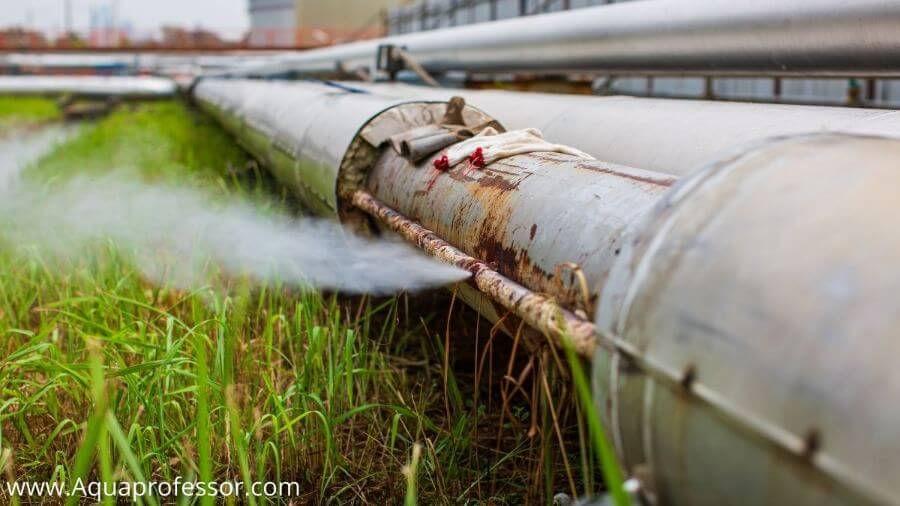
The pressure tank of a well gets waterlogged when there is a leakage in it or when the tank’s rubber ruptures.
How Does It Cause Fluctuation?
The leakage in the air bladder or rubber of your well’s water pressure tank leads to the loss of a significant amount of air from the tank.
As a result, the pump turns unstable and starts short-cycling by switching on and off. It leads to low water pressure and a decreased water flow from the faucet.
Steps to Solve:
Tips/Warnings:
Also Read: Is Your Water Softener Causing Low Water Pressure?
⚒️Well Pump Malfunctioning
A malfunctioned water pump is another reason that causes a well’s low water pressure or fluctuations in water pressure.
How Does It Cause Fluctuation?
A well pump usually malfunctions due to overheating or normal wear and tear.
If any of the two occurs, the well pump fails to pull water consistently, leading to your well’s inconsistent water pressure.
The wear and tear and pressure fluctuations happen mainly when:
Steps to Solve:
Tips/Warnings:
Also Read: How Deep Is A Typical Residential Well?
🪸 Corrosion in Plumbing Fixtures
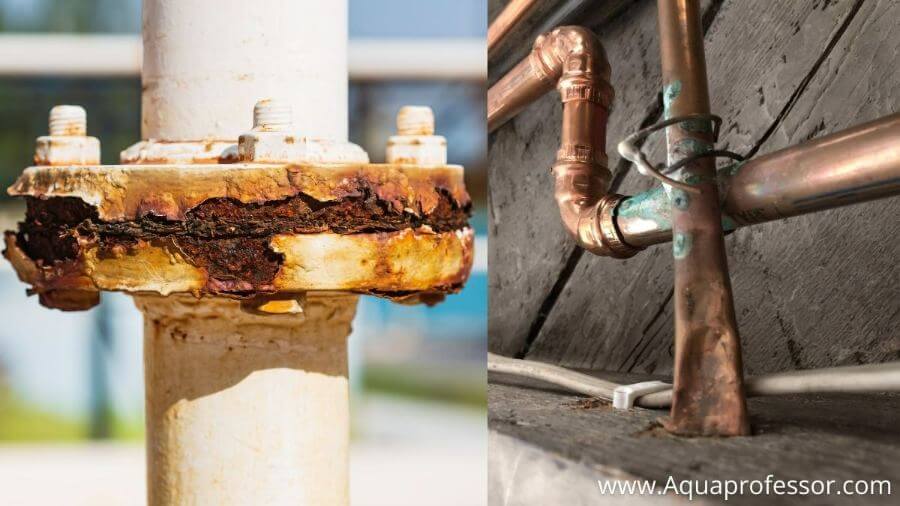
Sometimes, clogged fixtures of residential plumbing systems resulting from the deposition of hard water minerals also cause well water pressure fluctuation.
How Does It Cause Fluctuation?
Well water can comprise minerals like iron and manganese that, when coming in contact with the plumbing fixtures, bathtubs, faucets, etc., leave white scales on them.
These white scales block the fixtures and the other plumbing appliances from the inside and cause pressure fluctuation.
Because of it, you may find pressure drop problems at any particular point of use when the other faucet points are generating normal pressure.
Steps to Solve:
Tips/Warnings:
Also Read: Why Is My Water Softener Leaking?
🔧 Wrong Setting of Pressure Switch
Well water pressure issues, in some cases, also happens due to the wrong setting of the pressure switch and a bad pressure switch.
How Does It Cause Fluctuation?
Pressure switches, whose pressure settings remain pre-set, are responsible for switching on and off your well pump.
The normal air pressure within the tank remains set at 2 to 3 psi lower than the pressure switch’s cut-in value.
When the pressure switches become faulty, these settings become invalid leading to pressure fluctuation and low water pressure in the well.
The problem also arises when the pressure switch gets damaged.
Steps to Solve:
Tips/Warnings:
🔗Faulty Check Valve
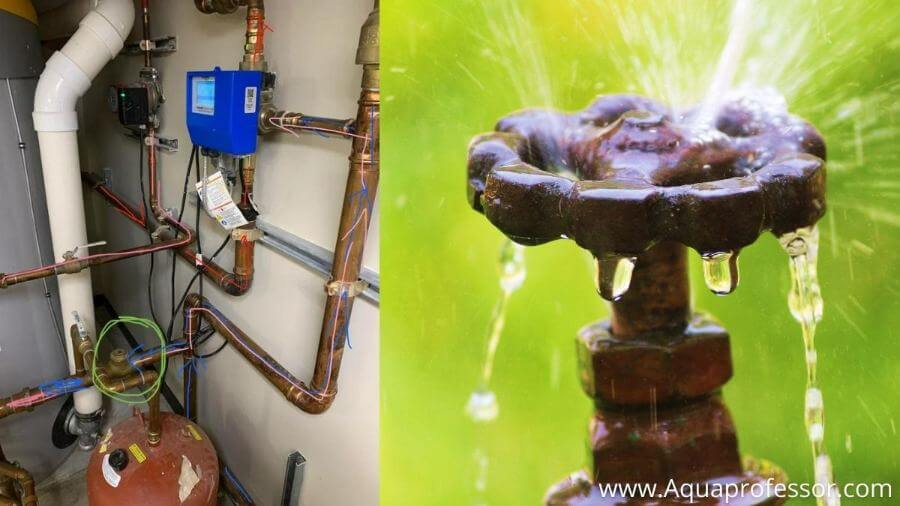
Check valves, also known as gate valves or ball valves, may occasionally turn faulty, causing pressure fluctuation.
How Does It Cause Fluctuation?
A Check valve of your well water pumping system works by opening and closing periodically.
However, sludge or other dust clogs the valve’s mouth either partially or fully.
Conclusion:
As a result, the check valve cannot function normally, resulting in pressure fluctuation.
This problem usually arises if the check valve has remained non-functional for a long time.
Steps to Solve:
Tips/Warnings:
⚠️ Water Pressure Regulator Malfunctioning
Does none of the above reasons explain your problem?
Then, your low water pressure or well water pressure fluctuations may be due to the malfunctioning water pressure regulator.
How Does It Cause Fluctuation?
Most well water systems comprise water pressure regulators placed on their system’s main pipes (the pipes that carry water to your house).
Over time, these pressure regulators either go faulty or get filled with rust and sediment, resulting in low or fluctuation in water pressure.
Steps to Solve:
Tips/Warnings:
🌬️Air Trapped in Pipes
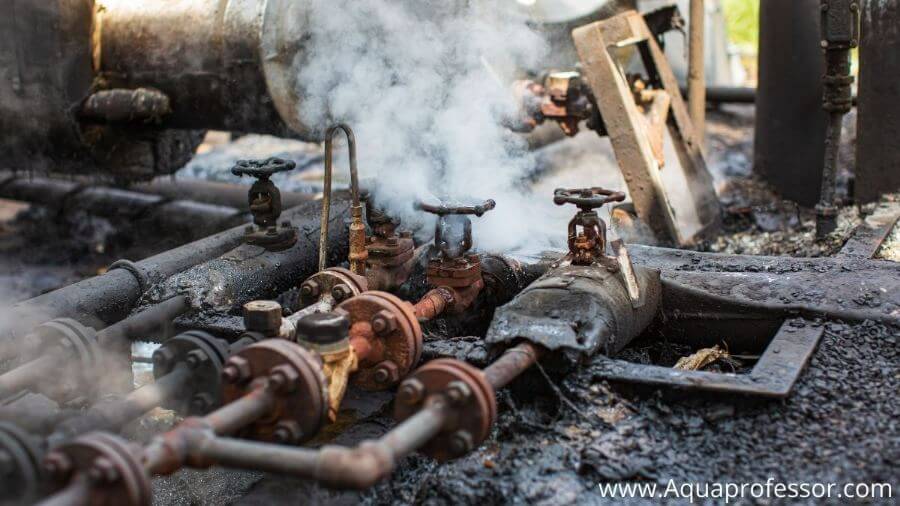
Air trapped in pipes is another reason behind the fluctuation of your well water pressure.
How Does It Cause Fluctuation?
When the air gets trapped inside the well water pipes because of the low water table, it causes the pressure to decrease.
It results in fluctuating water pressure of the well.
Steps to Solve:
Also Read: Air Bubbles In Well Water
If the above solution doesn’t work, call for a professional for assistance. If they say that your well has become unusable, you have to dig a new well for your use.
🙅♂️Clogged Water Filter Cartridges
Fluctuation in your well water pressure may also happen due to clogged water filter cartridges and other problems in water treatment systems.
How Does It Cause Fluctuation?
When the water demand of your well is high, and the filter is small, or when the cartridge gets clogged due to the deposits of iron, sediments, or other minerals, it results in a constant pressure drop.
The deposits usually happen if your house lacks a water softener.
Steps to Solve:
Tips/Warnings:
🪛 Abnormally High Water Usage
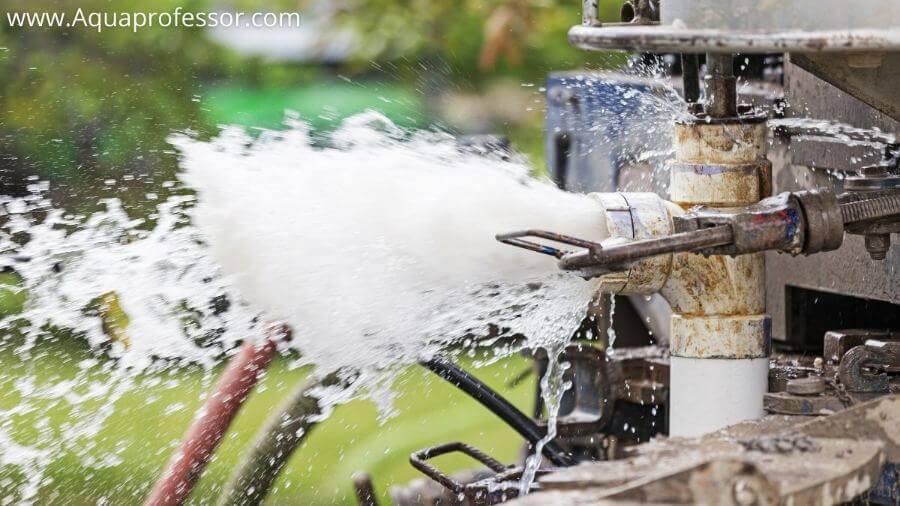
Sometimes, temporary fluctuations in your well water pressure may happen due to abnormally high water usage.
How Does It Cause Fluctuation?
Every well’s pressure tank or filtration system has a water handling capacity.
Excessive water usage at a given time frame creates tension in your well water system, resulting in a temporary fluctuation of its pressure.
Steps to Solve:
💡Well Water Pressure Fluctuates: FAQs
Why is my well water pressure pulsating?
Low water pressure in a well water system or pulsating of water pressure usually happens because of the following reasons:
1. Rupture in the internal air bladder of the well water tank.
2. Wearing out of the external electrical switch.
When either of the above occurs, it results in low water pressure in the well’s tank instead of constant pressure and a slow water flow rate.
How do you fix water pressure surging from the well?
To troubleshoot the constant rising pressure of water in your well, do the following-
1. Turn off your water pump system’s electrical power.
2. Now, drain both the pump system’s and pressure tank’s water away.
3. Look out for the tire-lookalike air bladder valve of the system.
4. Measure the tank’s air pressure by freeing the valve and putting a pressure gauge within it.
Why is my well not keeping pressure?
Low water pressure in your well may happen due to the following reasons-
1. Your well’s sediment filter is clogged.
2. The pump is not suitable for your well.
3. The pressure switch of your pump is faulty.
4. Under-inflated air bladder of the tank that needs a recharge.
What controls water pressure in a house with a well?
The municipal water system regulates the constant water pressure in a house with the public water system.
Nevertheless, you can control your private well water’s constant pressure with your well pump’s controllable settings.
Does a higher flow rate mean better water pressure?
Your pipes’ diameter in a well water system decides if you will have a low flow of water or a high one.
If your system has larger pipes, the water flow rate will be high and vice versa.
Besides, a system’s water flow also depends on the type of its water pressure- high and constant or low.
Therefore, the water flow rate of the system remains high if the constant pressure inside the tank is high and vice versa.
Adarsh is a Health & Nutrition Sciences graduate with expertise in environmental health. He is associated with ventures like Glacier Fresh Filter and Simpure Filter Systems. Through Aqua Professor, he intends to provide helpful information to every home to help them make smarter decisions.
